Image Credit: All photos: Kathy Price Robinson
Image Credit: All photos: Kathy Price Robinson Using an infrared camera, Stevie and Jennifer detect signs of air leakage through this home’s recessed light openings. A group of local women stop by for an overview of the energy course and a demonstration of some tools.
When I arrive for the five-day energy-auditing course at the Pure Energy Center in eastern Montana, I see instructor A. Tamasin Sterner outside the main house, clapping her hands and doing a little dance.
If you know Tamasin, a veteran energy auditor who famously counseled President Obama on the need for weatherization programs, you expect this show of exuberance.
And even if you haven’t met her, you can imagine Tamasin’s exhilaration. After attending spiritual retreats on this 212-acre wooded ranch for more than 20 years, Tamasin recently bought the property, which has cabins and lodging for about 30 retreatants, from her spiritual teacher. Her goal: to further develop it into a retreat, event and training center. This is the first women-only auditing course at the site.
During the coming work week, four of us — including me, a journalist coming in from New Orleans to deepen my home-performance knowledge; my step-daughter Jennifer Weedn, a mother of two young daughters in Northern California who is training for a new career, and Stevie Moe, a college graduate from Billings, Mont., seeking her life’s work — will listen, study, take notes, handle expensive diagnostic tools, audit buildings, laugh, cook, eat, hike and generally have a fun yet intense learning experience on the secluded ranch.
Day 1: Theory and practice
After sleeping peacefully in the quiet country air, we awaken to the aroma of coffee and bacon and what becomes our daily habit: being fed by Tamasin.
Arriving at 8 a.m. in the classroom, a converted family room, we find animal print office chairs and handcrafted wooden tables laden with learning materials: forms used by her home auditing company, Pure Energy Coach, copies of “Residential Energy” and “The Contractor Guide to Home Energy” and “Saturn Field Guide to Energy Auditing,” as well as guides to the BPI test, which Jennifer and Stevie will be taking.
Tamasin explains her purpose: to pass along her knowledge of the home as a system, and how to make homes safe, healthy, comfortable, durable and energy-efficient. She especially cares about single mothers so debilitated by unhealthy, unsafe homes that they can’t dig themselves out of poverty.
As she runs through the principles of home performance with a series PowerPoint slides, her students catch on quickly. When positive and negative pressure come up, Jennifer understands: “Like when someone opens a window in a house and all the door start slamming,” she offers. “Yes, yes, yes,” Tamasin says. “You’ve got this.”
Both young women come to the class with handy life experiences: Jennifer grew up a remodeling contractor’s daughter and Stevie works for a weatherization nonprofit.
After theory comes practice, setting up the blower door to audit the main house. It turns out to be pretty leaky: about 3,600 cfm when tested at 50 Pascals of depressurization.
Using infrared cameras and thermometers, the students discover the likely culprits: unsealed top plates and leaky ducts. Eventually they discover, behind a cabinet door, a 10-inch hole cut for a 4-inch pipe, leaking air from the crawl space to the home. “Thanks, plumbers,” Tamasin says, and demonstrates the ease of spray-foam air sealing. “Foam was sent by the angels,” she often proclaims.
Toward the end of the day, a group of local women stops by for a quick overview of the program and a demo of Tamasin’s cool tools. Several want to return for the full course.
Day 2: Auditing a tight house
After more PowerPoint and theory, including “Steps to a Good Audit,” Tamasin gets down to work at the tables, explaining BPI standards. During our continuing examination of the main house’s energy issues, Tamasin explains how to talk to clients and write up reports. According to her, while the black-and-white setting on the IR camera gives auditors more precise readings, the full-color display excites homeowners.
On breaks, we tour the ranch, its assorted cabins, the photovoltaic array, the commercial kitchen, and the luminous main hall, big enough for groups of 100. The hall still needs insulation (two-part spray foam, of course), HVAC equipment, and bathrooms, and is the last major project before the center is ready for full operation. Tamasin talks of manufacturers possibly donating materials and labor to complete those projects, thus giving employees a unique training experience.
The class then loads the blower door and other tools into the center’s minivan and heads off for an audit at an adjacent ranch. The leakage rate at this newish, tightly constructed house come in at about 1,700 cfm. Few energy or safety issues emerge, though a basement drain trap that was allowed to dry out emits sewer gases, and Tamasin counsels the homeowner to keep the trap full of water.
Coming back to the classroom, we finish the day watching a video: “The House as a System” by energy expert David Keefe.
Day 3: BPI standards
To begin the day, Tamasin plays a DOE video, “Weatherization Works!” With a moving piano score, images of low-income families in sickening homes, and the weatherization workers that come in to help them, I get teary-eyed. “That’s what I’ve dedicated my whole life to,” Tamasin says.
Today is all about BPI standards, calculating energy use, calculating volume, air-sealing goals, ventilation, ventilation and more ventilation. To break up the day, Tamasin demonstrates at the kitchen sink and a bathroom shower how to measure water flow. To conclude the day, we watch a video, “Building Analyst Field Training: How to Perform a Home Energy Audit.”
Day 4: Auditing an architect-designed house
The morning’s teachings revolve around requirements for safe combustion and the dangers of carbon monoxide. One slide portrays the family of four who died of CO poisoning in Aspen three years ago due to installation defects on a snow-melting device, and the lack of a legally required CO monitor, both of which escaped notice in a building inspection. (The criminal trials of the building inspector and HVAC contractor are set for later this year.)
Fortified with new knowledge, the students load up the van for a full audit on an architecturally complex house owned by a friend of Tamasin’s. Stopping by a ranch outbuilding with a collection of used heaters, Tamasin points out the components of various systems, both smart ones that won’t fire in unsafe conditions and “stupid” appliances that fire no matter what.
At the friend’s house, the class greets the owner and then examines the exterior, looking for kneewalls, hidden attics, plumbing and heating protrusions, and unusual rooflines, of which they find many.
Inside, Tamasin models business procedures for the students by explaining the upcoming process to the owner. The blower-door test reveals a pretty tight house, again with about 1,700 cfm of leakage at minus 50 pascals, with most of that coming from recessed lights in the high ceiling — lights which the homeowner never uses. Tamasin’s suggestion: seal them up.
In the basement, the students hit the jackpot, finding a small gas leak in the water heater: a failure of the spillage test when put under worst-case depressurization conditions (i.e. all windows closed and all exhaust fans and gas dryer running), as well as a flaw in the heater’s exhaust pipe connection, causing condensation to drip down the outside and onto the appliance, causing rust.
Tamasin’s suggestion for the water heater drafting problem: Don’t use the Jenn Air downdraft exhaust fan (which sucks a whopping 500 cfm) when the dryer is running, or crack open a window while cooking so as not to steal needed combustion air from the basement. The minor gas leak and exhaust-pipe problems require repairs by a plumber.
After it was over all, Jennifer says: “Actually, that was awesome.”
In the evening, Tamasin spends time with each student to discuss future career moves. In Jennifer’s city, Tamasin discovers via online sleuthing, a weatherization program for low-income residents received a lot of federal funds and apparently still has some left. She counsels Jennifer on whom to approach about a job, the time of the week to make contact (not Mondays or Fridays) and how to parlay Jennifer’s own story as a struggling single mother into an added job qualification for serving the intended clientele.
Day 5: Review and testing
At 8 a.m. in the classroom, crunch time arrives with BPI standards, complicated math equations, and sample test questions filling the air. Eventually it’s time for the written test, the oral test, and the field test.
Walking the ranch roads one last evening before the students head home and Tamasin heads to her home base in Lancaster, Penn., she’s more than happy with this inaugural course. Initially, she thought perhaps 15 students would be manageable. But after this experience, she will limit future classes to eight students to ensure time for each student’s needs.
For this class, the charges are: $650 for the class; optional $200 for food and lodging, and optional $650 for BPI testing and certification. For those already BPI certified, the course earns 7.5 CEUs.
To keep track of future courses, visit the Pure Energy Coach website.
Weekly Newsletter
Get building science and energy efficiency advice, plus special offers, in your inbox.

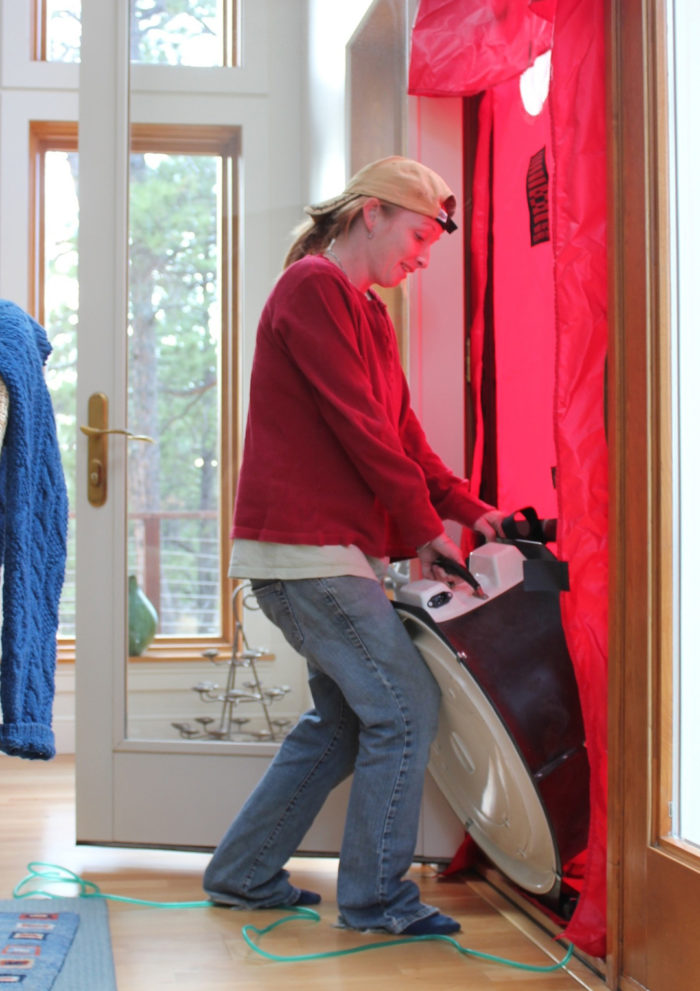




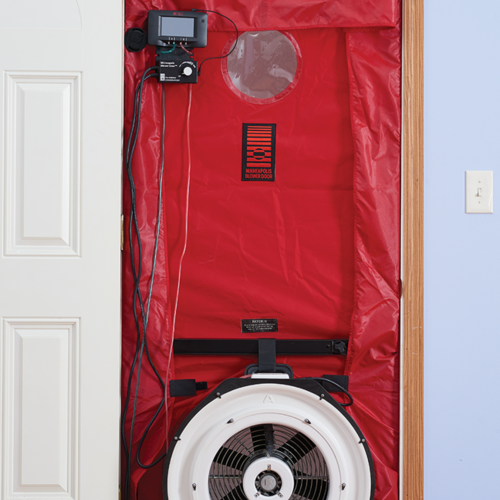
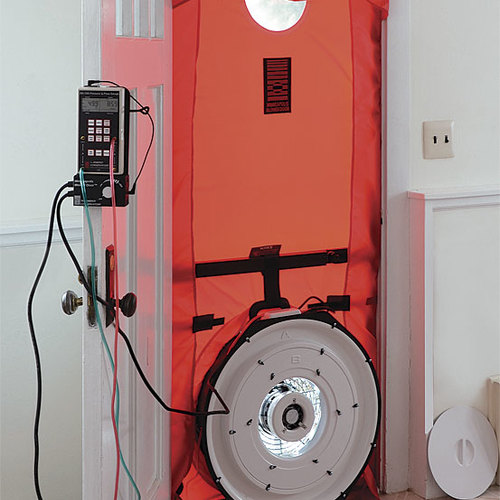
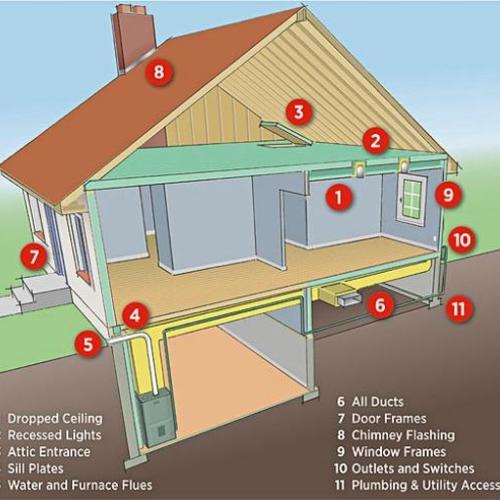
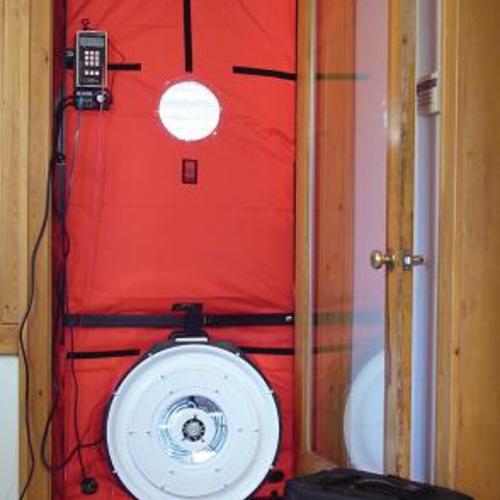






6 Comments
Great story
Thanks, Kathy - a terrific piece. I grew up with the mother of the Aspen family - glad to hear that at least their deaths are being used as a teaching tool. And I think this is a fantastic way to get more women into the trades, which is a desperate need.
Kudos
Kathy,
Nice article...thank you
you mentioned the David Keefe video ... I highly recommend it to anyone
here is a link
http://www.affordablecomfort.org/resources_videos.php?PageID=80&id=5#video
Aspen family
Thanks for your nice comments, Dan. I didn't realize you grew up with the mother of the family who died three years ago in Aspen from carbon monoxide poisoning. How very tragic. I'm not sure how many people are following that case, but the HVAC contractor and building inspector have been charged with criminally negligent homicide and their trials start this month and next. This could be a real game changer, and the ICC is supporting the inspector's defense.
David Keefe video
Thanks, John, for adding that link. You are so right. David Keefe brings a refreshing clarity to the topic and helps us understand better not just the current state of the industry, but how we got here. Watching a variety of videos during the five-day training exposed the students to the same energy auditing tools, theories, procedures and terminology from a variety of sources. This gave us the impression of a solid, scientifically sound industry. It kind of makes me wish I'd gone for the BPI certification, as well, which would add a rosy glow to my reporting credentials.
Not sure that should be an industry standard solution
QUOTE: Tamasin’s suggestion for the water heater drafting problem: Don’t use the Jenn Air downdraft exhaust fan (which sucks a whopping 500 cfm) when the dryer is running, or crack open a window while cooking so as not to steal needed combustion air from the basement.
Not sure that should be an industry standard solution
Not an industry standard
Robert, you are so right. I realize now that my writing about the incident was done in an unfortunate shorthand. It wasn't really Tamasin's solution that I recorded, but ideas that the students tossed around. I think the purpose for that particular learning unit was to understand the science behind where combustion air comes from, why it becomes in short supply, the consequences of that lack, and possible ways to alleviate that lack. The solutions tossed around were definitely not industry standards, but they did illustrate the student's deep understanding of the principles of combustion air and the laws of nature.
Log in or create an account to post a comment.
Sign up Log in